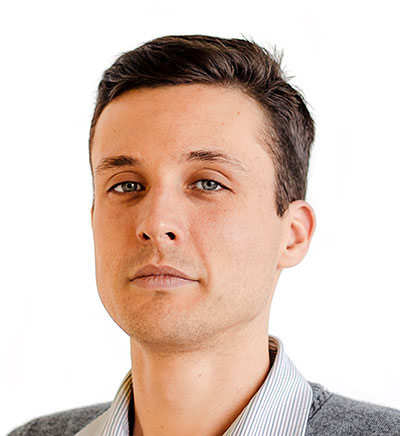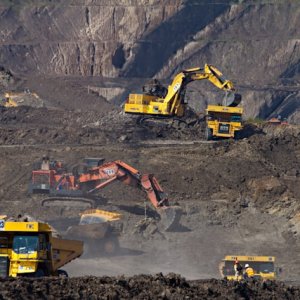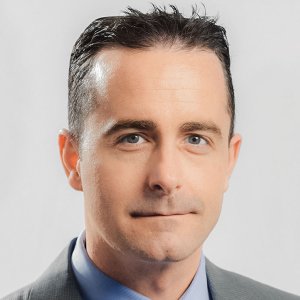Nascent Mining Company Selects Mexico for Its First Asset

Q: Why did Orla choose to develop its first project in Mexico?
A: We are building a mining company with assets in various countries, and we selected Mexico first for a number of reasons. Our team has a history of success in Mexico: it believes in Mexico as a mining jurisdiction. Camino Rojo is a strong project and it is located in Zacatecas, a state that understands and supports mining. As we build a mining company, our first mine has to be the least problematic. We are confident that Mexico provides the right conditions for developing a mine smoothly.
Q: What are Camino Rojo’s main financial characteristics?
A: Initial capital for the project is US$123 million, not including VAT and additional working capital which we will use to ramp it up into production. The life-of-mine capital over the project’s lifespan is US$154 million. The first component of financing took place in 2019. We were able to raise US$125 million in debt. A variety of providers, including conventional banks, alternative debt providers and streaming companies, presented us with term sheets. Streaming is not the best option for our project: we will not produce a lot of byproduct because Camino Rojo is mostly a gold project. Traditional banks, although they offer good terms, do not provide money up front. Therefore, we selected an alternative debt provider, which enabled us to obtain some of the money immediately. We drew the first US$25 million at the end of 2019. We are using this money to continue detailed engineering and to procure some of the necessary items to keep us on construction schedule. The US$125 million that we have in debt has a five-year term and an 8.8% interest rate. This financing outcome means that we are ready to construct as soon as required permits are received.
We still need to secure the non-debt component of our financing structure. Normally, a project like Camino Rojo is financed on a 60-40 debt-to-equity ratio. Once in construction we will seek this additional financing to keep the project going. It will come from sources other than debt: a check from a large investor or the stock market. Our largest shareholder is Newmont, followed by Pierre Lassonde, Agnico Eagle and then management and directors. That group holds over 40 percent of the shares. Our shares have performed very well over the last 8 months. In June of last year, we were at around CAD$1.00 per share and now we are at CAD$2.30. Some credit goes to the gold price, but we are outpacing other companies, due to our timely delivery and execution. If we get the permits on time, deliver construction on schedule and on budget, achieve an expansion agreement with Fresnillo and articulate what our sulfides resources are worth, the share price should exceed CAD$4.
The plan for making the company more valuable is to complete our project in Mexico, and then use the resources it generates to build another high margin mine in Panama. As we develop the resources that we currently have— over 10 million ounces — it should result in a higher share price. Our market capitalization in 1H20 has reached CAD$480 million, and CAD$1 billion is within our grasp.
Q: How is the permitting process going?
A: We have one of the two permits we need to enable construction. Once we get the remaining permit, we will begin construction and expect to be in production by mid-2021. We are confident of obtaining the permit we still need. There are no indications that the authorities are going to delay the process. Despite some headlines about permitting for the mining industry in Mexico, our experience at Camino Rojo has been smooth and timely. We received the Change of Land Use Permit at the end of 2019. This was within the timeline the government had delineated. Similarly, the process for our Impact Assessment permit has been on schedule. We are now in the second part of that process. We are counting on the permit to be approved before mid-2020.
It helps that Camino Rojo is in Zacatecas, a state with a long mining history and a well-established mining culture. But independent of that fact, there are a number of elements necessary to ensure a smooth permitting process in Mexico. It is important to submit documentation that demonstrates you understand the project’s impact, not only on the environment but also society. Regulators will not deny economic development, but they will be rigorous about making sure development has controlled social and environmental impacts. Our role is to work with the authorities to this end, so we have to provide all the information required.
Q: Camino Rojo has Fresnillo as its neighbor. What is your relationship with Fresnillo?
A: Our neighbor to the north, Fresnillo, is an important part of our story. While all of the gold that we intend to produce is on our concession, if we want to access more gold in the future — at depth and in our own concession — we would need a bigger pit. Such an expansion would encroach on Fresnillo’s land. Even though the feasibility study that we published in 2019 has nothing to do with Fresnillo, we recognize the value of the additional gold that we may access in the future. We are prepared to share that value with our neighbor in a mutually beneficial agreement. For example, an arrangement where Orla accesses its own additional gold and pays Fresnillo for the right to do it would be a win-win situation. The life span of our project would be extended and Fresnillo would benefit. I am confident that we will reach an agreement because there is value present. Both parties recognize that value and agree that it should be shared. Of course, it always comes down to price, and that is something we will have to negotiate. From a timing perspective, we would like to announce an agreement to the markets sooner rather than later. This would enhance our project and our status as a company. But from a mining engineering perspective, we do not need an agreement. We are able to start our project as outlined in the feasibility study.
Q: How has Orla Mining achieved one of the lowest production costs in the gold mining sector?
A: There are two components to this. First, the operating costs, and then sustaining capital costs on an annualized basis sum up the AISC. The reason our operating costs are low is that the geology allowed for an open pit mine and the metallurgy allowed for a heap leach project. An open-pit, heap-leach mine is the most cost-efficient option and got us just over US$500 per ounce on a by-product basis. With respect to the sustaining capital costs, there are four reasons for our low costs. The first, again, is the heap leach. There is no tailings dam to build up every year. The second is related to the open pit. In some open pits, if you have to move a lot of waste material to get to the gold, that stripping cost is capitalized. This results in a large annual capital number. But in our case, given our stripping ratio, we do not have a lot of waste material to move. A third point is our processing plant. When you have a multibillion-dollar plant, you must pay every year to fix and replace things that wear out. We have a heap leach and a small Merrill-Crowe plant. The final reason is the mobile fleet, which is also a capitalized cost. Absent the deal with Fresnillo our mine life would be around seven years. Even with a deal, with Fresnillo, the mine life would be within the lifespan of a single mobile fleet. Therefore, we are not going to have to replace the fleet. These four capital factors push the AISC cost below US$600. It is not that our cost estimates are aggressive. Rather, we are fortunate that our project does not require higher costs.
Q: How advanced are you on the process of selecting your contractors and what criteria do you use for selecting them?
A: As of 1Q20, we have not selected a mining contractor yet. We have selected M3 as our EPCM. They have a wide experience in Mexico, having built, for example, Peñasquito and Torex Gold’s project in Guerrero.
Selecting our contactors involves a three-stage process. First, we look at who has the technical capability to do the job. We check that first. For example, we make sure that the company has built crushers before, or that they have mined ore bodies before. In this way, we shortlist a number of companies that are a good fit technically.
After that, we focus on costs. Not to suggest that we are necessarily looking for the lowest cost. But it has to be one of the lowest. What one often finds is that mining costs do not tend to vary significantly from one supplier to another. Nevertheless, this comparison does help us reduce the list further.
The final stage is related to social criteria. Once we determine whether the contractor is capable of undertaking the job, and once we compare costs, the deciding factor will be a social one. We research which company has the best track record providing local employment, and the best reputation of paying their employees adequately and treating them right. We feel that our contractors are an extension of us, and they need to behave as responsibly as we do. At the end of the process, we have a technically-capable, low-cost, socially-responsible contractor.
Q: What keeps you up at night in this project?
A: The project is advancing smoothly. At Orla we plan sufficiently and take care of all we can take care of, so we move smoothly forward from stage to stage. Having said that, construction is never easy. There are many challenges along the way. It helps having an experienced team that can foresee to a certain extent the problems that can come up.
One challenge is to have a continuous assessment of where we are cost-wise. There are always things that cost more than expected, but we hope to be able to offset them with things that are less costly. Schedule is another aspect that will be challenging. You plan and predict to the best of your ability. But there are always things that take longer. The goal is to deliver a project at a certain price and within a certain time. Achieving this goal is challenging, but manageable if planning is done responsibly.
There are things that we must be completely vigilant about. Making sure our people get back home safe at the end of the day keeps me up at night. I do not want anyone working at one of our projects to get hurt. Conducting business in a manner that is responsible to the environment is crucial, as is making sure that our teams relate to the societies where we work in a dignifying and respectful manner.
Q: How does Orla Mining approach the procurement of its social license to operate?
A: It is a very exciting thing to construct a mine from scratch, and the local community grants us permission to do it. To obtain that permission and keep it for a long period of time, it is important to be socially responsible when conducting business. What we mean by that is that a mine produces wealth. This wealth needs to be shared among all stakeholders. One of these stakeholders is, of course, the shareholders. They are paying for all of this, so we need to make sure they are paid back: they invested in our company for a return on their investment and our job is to achieve that.
But they are not the only stakeholders. Our employees are stakeholders, too. They get jobs, benefits and opportunities. Our suppliers are also stakeholders. The members of local communities are stakeholders. They are giving us permission and in return, they get benefits, like jobs and business opportunities. They also get the benefit of the mine enhancing their local economy, supporting social programs, and providing educational opportunities. We are happy to partner with those communities because we are neighbors. We want to have a productive relationship with them and help one another. The Mexican authorities are also stakeholders. They are paid taxes in return for our activities.
But it is important to highlight, with regard to the local communities, that our role is not to replace the authorities. Rather, we are there to converse about our responsibilities as a public company with our neighbors and to achieve mutually-beneficial agreements. We are interested in devising work plans in conjunction with the government to the benefit of everybody.
Our goal as a public company is to make the local communities feel that they are better off because the mine is there. If the company is open and accessible, then the community knows the doors are open. They do not expect all petitions to be granted. They understand it is a conversation between two reasonable neighbors. Sometimes, however, there are threats that come from outside the community, from people who mistakenly feel entitled to the monetary benefits of the mine. The only way to be protected against that is to treat your real stakeholders with dignity and respect, so that they continue to prefer to deal with you directly rather than be influenced by other parties.
Q: What is the difference in mindset between the companies that set the right example as opposed to those that do not?
A: The world of mining is populated by all sorts of people. Within that population, the kind of people with experience, capability and similar philosophies tend to group together. At Orla, we look for people who are responsible and effective. For evidence, one only needs to look at the board of directors at Orla: it is a whos-who of the mining industry. Our shareholder list presents the same pattern. When selecting our team at Orla, we look for the following traits. A caring mindset. They must care about the environment, social responsibility and safety. After this, efficacy. The person must deliver and understand the complexities of the business. Thus, we have formed a team at Orla made up of caring and effective people. A team of such characteristics is what sets Orla apart from other companies.
Our ambition is to be a counter-example to any bad examples that have tilted the conversation toward a negative tone in Mexico. When Mexico has to choose which company to support, we hope that it points to Orla as an example of modern, responsible mining. We want the regulators, politicians, and citizens of Mexico to be supportive of Orla’s success.


 By Alejandro Ehrenberg | Journalist and Industry Analyst -
Wed, 03/18/2020 - 15:36
By Alejandro Ehrenberg | Journalist and Industry Analyst -
Wed, 03/18/2020 - 15:36

















